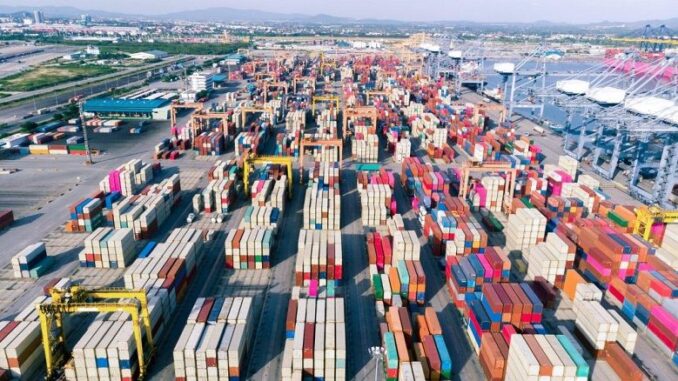
The new $3.5 billion Chancay megaport in Peru, built by China under the Belt and Road Initiative (BRI), is set to boost trade between South America and China, changing regional economic dynamics and raising concerns in the United States.
The $3.5 billion deep-water port in Chancay, Peru, mainly owned by China’s Cosco Shipping, is causing concern in the U.S. The port, part of China’s BRI, aims to establish direct shipping routes between South America and Asia. It’s expected to be finished by the end of 2024.
Once completed, the port will have 11 berths for some of the world’s largest container ships. The first four berths are set to open in 2024, with the rest following in later phases. This mega-port will change trade in the region, allowing direct imports from South America to China and likely diverting trade from traditional routes through the Panama Canal.
Brazil, a major agricultural exporter and key BRICS member, is very interested in using this new port to speed up exports to China.
Strategically located on Peru’s Pacific coast, the port will create direct shipping routes to Asia, cutting transit times by up to 30 days, crucial for perishable goods like fruits and vegetables, making them more competitive in Asian markets.

The Chancay mega-port is part of China’s broader strategy to expand global trade. As a key part of the BRI, it aims to build infrastructure networks across Asia, Europe, and Africa, creating new trade routes and strengthening economic ties with partner countries.
China has also been actively pursuing free trade agreements, covering nearly 40 percent of the global economy. The “Made in China 2025” industrial policy aims to boost China’s high-tech sectors and advanced manufacturing capabilities, which is reshaping global trade dynamics.
Peruvian President Dina Ercilia Boluarte Zegarra is on a five-day state visit to China, to present business opportunities in her country, and strengthen economic cooperation with China.
The mega port will also open new opportunities for Peruvian and other South American exports including minerals, agricultural products, and manufactured goods. At the same time, it will make it easier for Chinese exports like electric vehicles and consumer goods to enter South America and beyond. The improved logistics and lower transportation costs are expected to significantly increase trade volumes between South America and Asia. Experts believe the Chancay port could make Peru a major hub for global trade, boosting regional economies.
U.S. companies, already struggling to compete with their Chinese counterparts, will face more competition in South American markets as China boosts its economic ties and invests in infrastructure.
Video: Tech Revolution, June 30, 2024. https://youtu.be/wsA0MFjTWZA?t=80
See also: SCMP, June 27, 2024. https://youtu.be/HkQPoz8PpIc